Discover top guides, trends, tips and expertise from AIO Writers
15 Best PPC Platforms to Drive Sales & Build a Brand
Ben Harper
Monday, 10th Mar 2025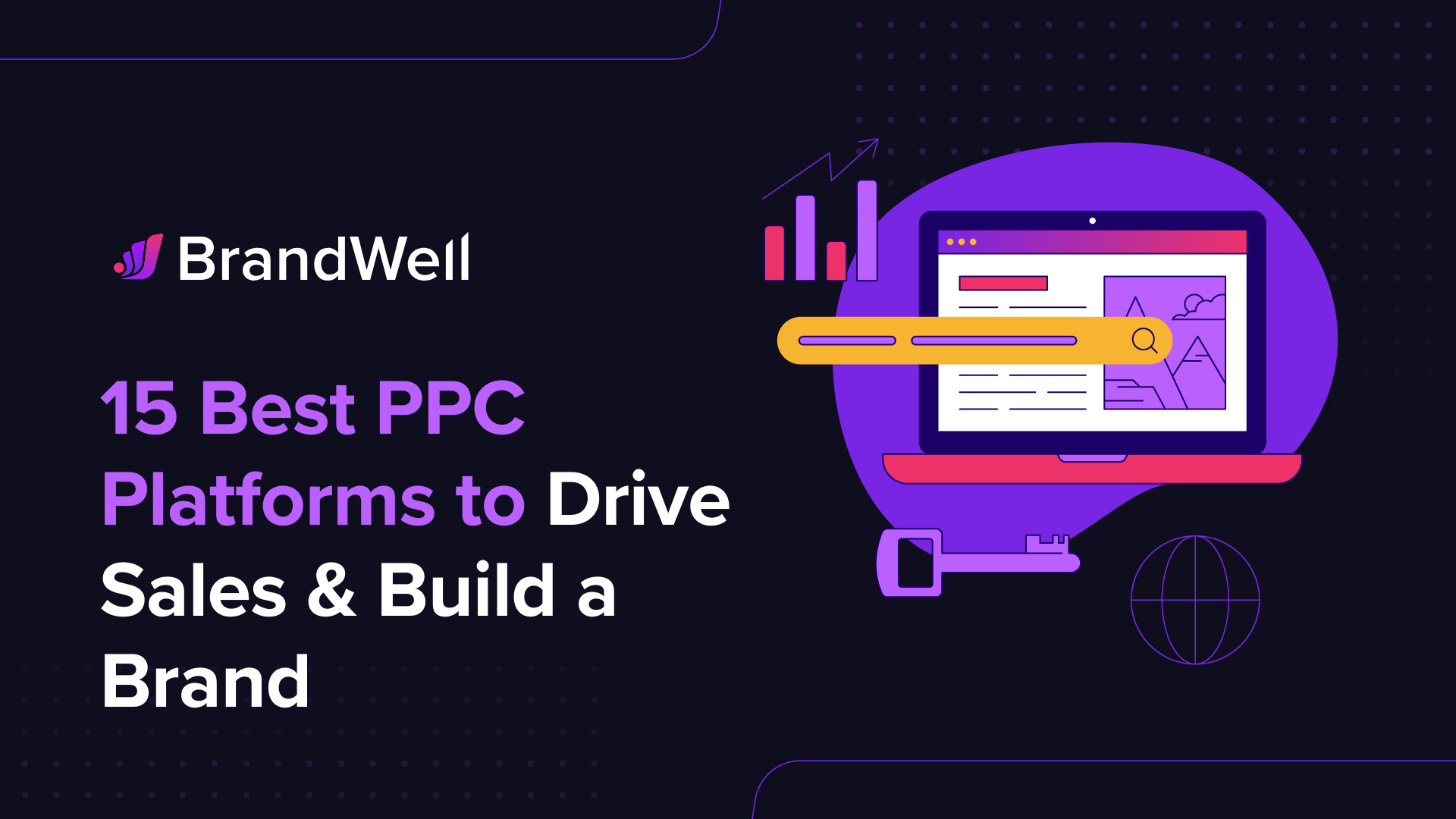
Did you know businesses are expected to spend nearly $800 billion on digital advertising in 2025?
That’s because online ads are more effective than ever at reaching the right audience at the right time.
Whether you’re selling a product, promoting a service, or just trying to get your brand noticed, paid ads make it easy to put your message in front of potential customers.
But with so many paid advertising options out there — Google Ads, Facebook Ads, YouTube, TikTok, and even Spotify — how do you choose the right one?
In this guide, we’ll break down the best PPC platforms of 2025, showing you different formats and pricing models so you can decide which one is the best fit for your business.

What is a PPC Platform?
Pay-per-click (PPC) platforms are advertising networks that allow businesses to place ads on the Internet and pay only when users interact with them — usually through clicks, impressions, or conversions.
These platforms allow advertisers to target users based on specific keywords or interests as well as geographical location and device type.
Types of PPC Platforms
PPC platforms can be categorized into different types based on how and where the ads appear. Let’s take a closer look at each type, how they work, and who they are best suited for.
1. Search PPC
Search PPC platforms display ads at the top of search engine results pages (SERPs) when users enter specific keywords. Advertisers bid on keywords, and the highest bidders (along with ad relevance) determine which ads appear.
Ideal for: Businesses targeting high-intent customers actively searching for products or services. Best for e-commerce, local businesses, and service-based industries.
Examples: Google Ads, Microsoft Ads
2. Display PPC
Display ads appear as banners, images, or interactive media on websites within an ad network. These ads are shown based on user interests, browsing behavior, and demographics.
Ideal for: Brand awareness and retargeting campaigns. Best for businesses looking to stay top-of-mind with potential customers.
Examples: Google Display Network, AdRoll, Taboola, Outbrain
3. Social Media PPC
Social media platforms allow advertisers to create highly targeted ads based on user demographics, interests, and behaviors. These ads appear in news feeds, stories, and other native placements.
Ideal for: Businesses looking to build brand engagement and reach a specific audience based on social behaviors. Works well for e-commerce, lifestyle brands, and B2B marketing.
Examples: Facebook Ads, Instagram Ads, LinkedIn Ads, Twitter Ads, Pinterest Ads, Reddit Ads
4. Video PPC
Video ads appear before, during, or after video content on streaming platforms and social media. Advertisers pay based on views, impressions, or engagement.
Ideal for: Brands focused on storytelling, increasing brand awareness, and engaging visually-driven audiences. Great for entertainment, fashion, and tech industries.
Examples: YouTube Ads, TikTok Ads, Spotify Ads
Now let’s look at the top paid advertising platforms serving the global PPC ad market.
1. Google Ads
Google Ads is the largest and most powerful PPC platform, allowing advertisers to place ads on Google Search, YouTube, Google Display Network, and partner websites.
With billions of daily searches, Google Ads offers unparalleled reach. Potential customers often use Google as their go-to search engine, regardless of what you are selling — from jewelry to plumbing services.
However, high competition can lead to more expensive ads if many others bid on the same keywords. Finding relevant terms with enough search volume can also be challenging.
Placements: Google Search, YouTube, Google Display Network, Shopping Ads
Formats: Search ads, display ads, shopping ads, video ads, app ads
Pricing: The cost of Google Ads depends on a variety of factors, including your industry niche, ad format, and other relevant considerations. On average, search ads range from $2 to $4 per click, while ads displayed on the Google Display Network generally cost around $1 per click.

Why Should You Advertise on Google?
- Massive reach: Google processes around 14 billion searches per day, meaning your ads can reach a vast audience.
- High-intent users: People searching on Google often have a clear intent, making them more likely to convert.
- Diverse ad formats: From text ads in search results to visually rich display and shopping ads, Google offers a format for every campaign goal.
- Advanced targeting: You can target users based on location, device, interests, demographics, and even past interactions with your site.
- Scalable budget: Whether you have a small or large budget, Google Ads allows flexible spending and optimization.
How to Set Up a Campaign on Google Ads
Step 1: Create a Google Ads Account
- Go to Google Ads and sign in with your Google account.
- Click “Start now” and enter your business details.
Step 2: Choose Your Campaign Goal
- Click the “Campaigns” button and then the “+” icon to create a new campaign.
- You will be asked to select a campaign objective from options like Sales, Leads, Website Traffic, Brand Awareness, or App Promotion. Google will tailor recommendations based on your goal.
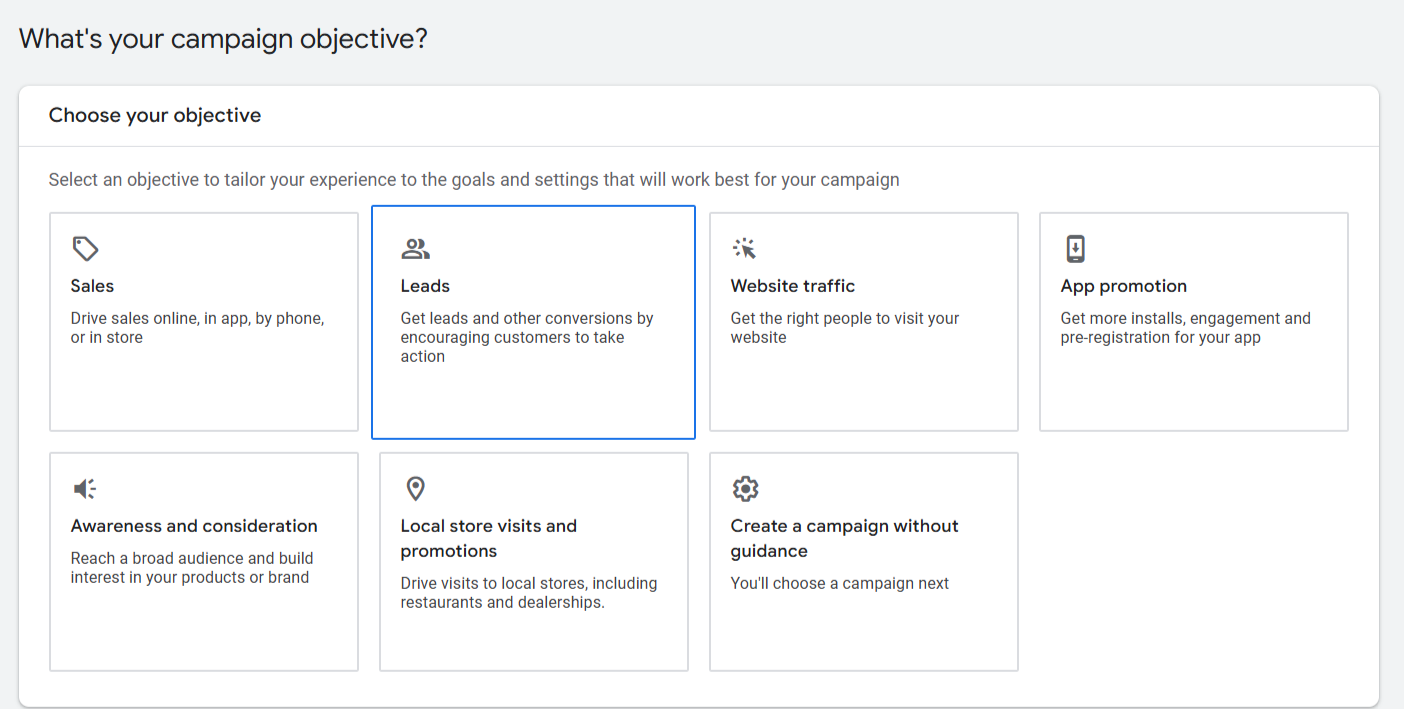
Step 3: Select Your Campaign Type
- Search: Text ads on Google Search results
- Display: Banner and image ads on websites
- Shopping: Product ads in Google Shopping results
- Video: Ads on YouTube and partner sites.
- App: Promote your mobile app
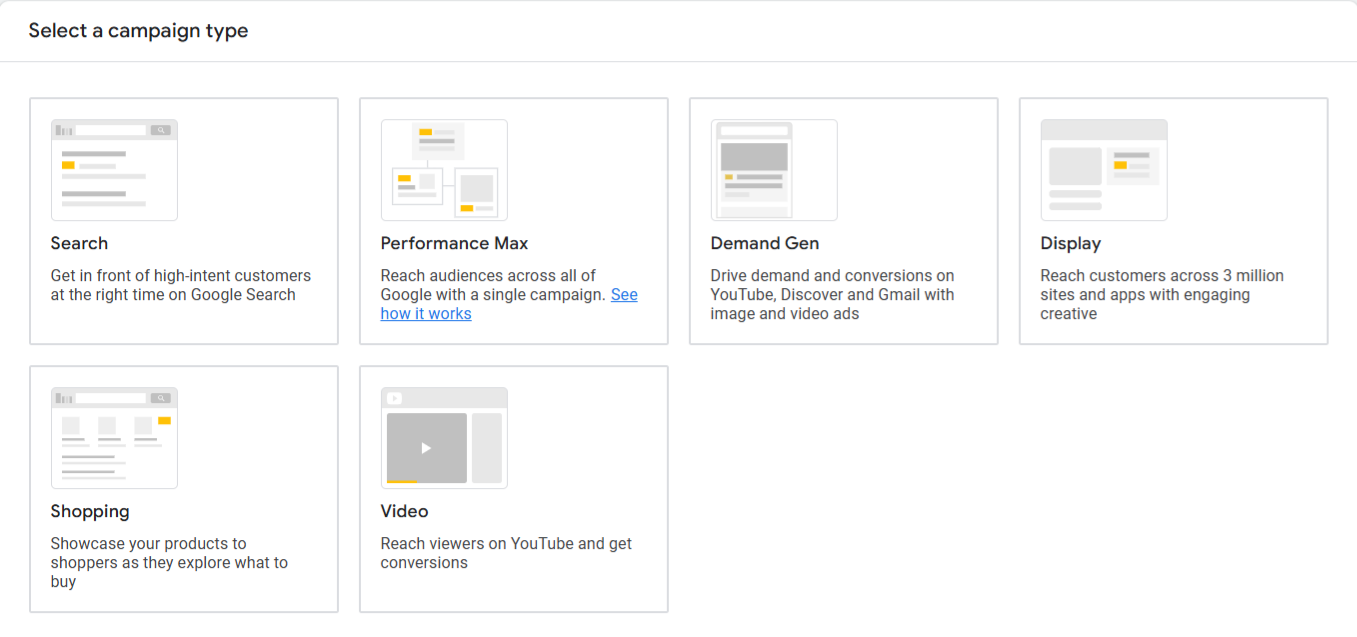
Step 4: Set Your Budget and Bidding Strategy
- Choose a daily or monthly budget.
- Select bidding strategies: Cost-Per-Click (CPC), Cost-Per-Impression (CPM), or Cost-Per-Acquisition (CPA).
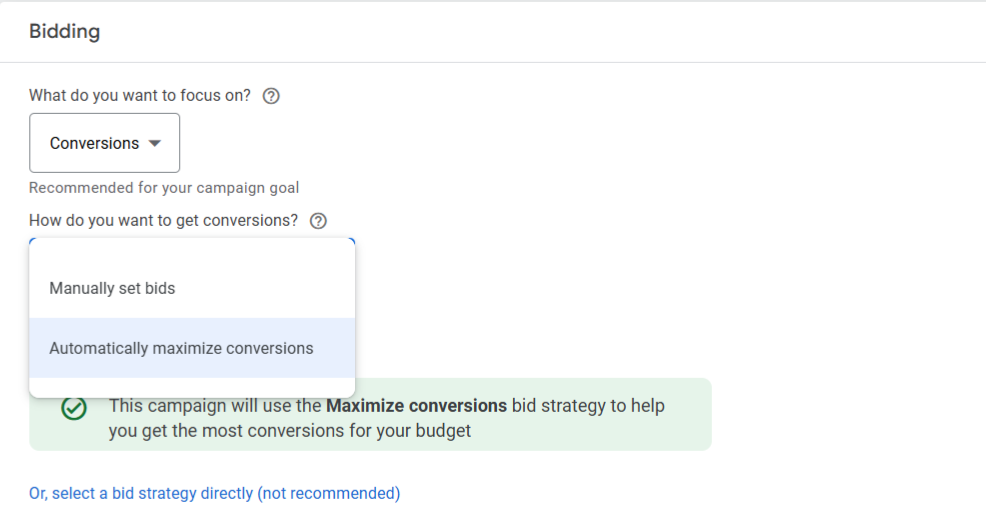
Step 5: Define Your Target Audience
- Set targeting options like location, language, device, and audience segments.
- Use keyword research tools to find the best search terms for your campaign.
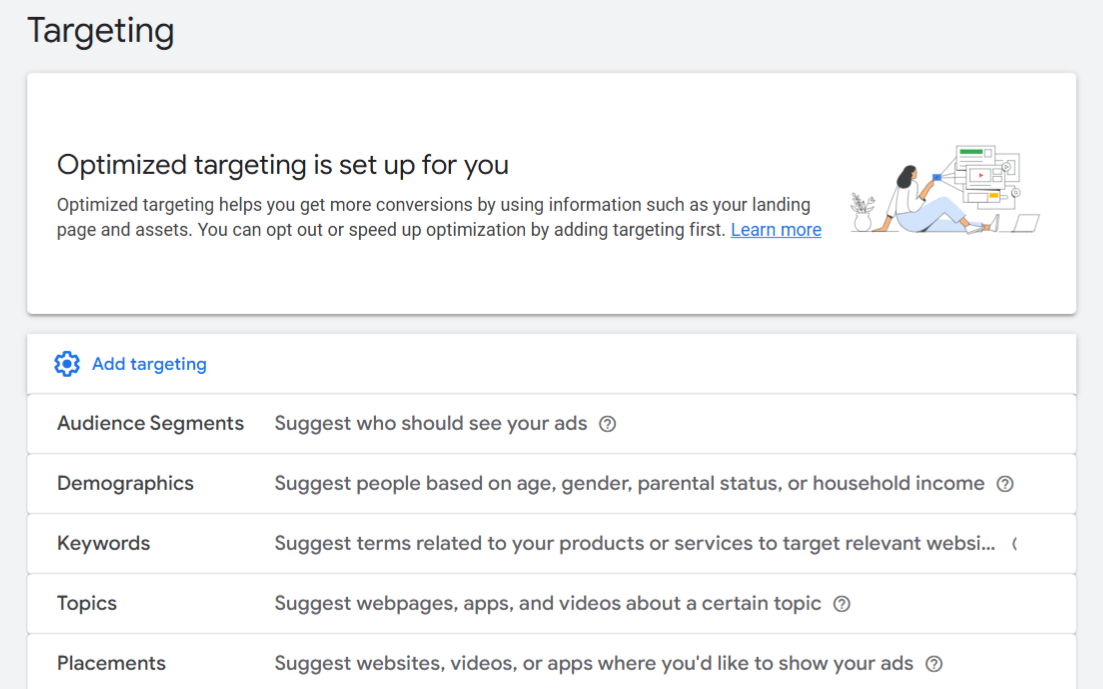
Step 6: Create Your Ads
- Write compelling headlines and descriptions.
- Include relevant keywords, a strong call to action, and engaging images and videos if applicable.
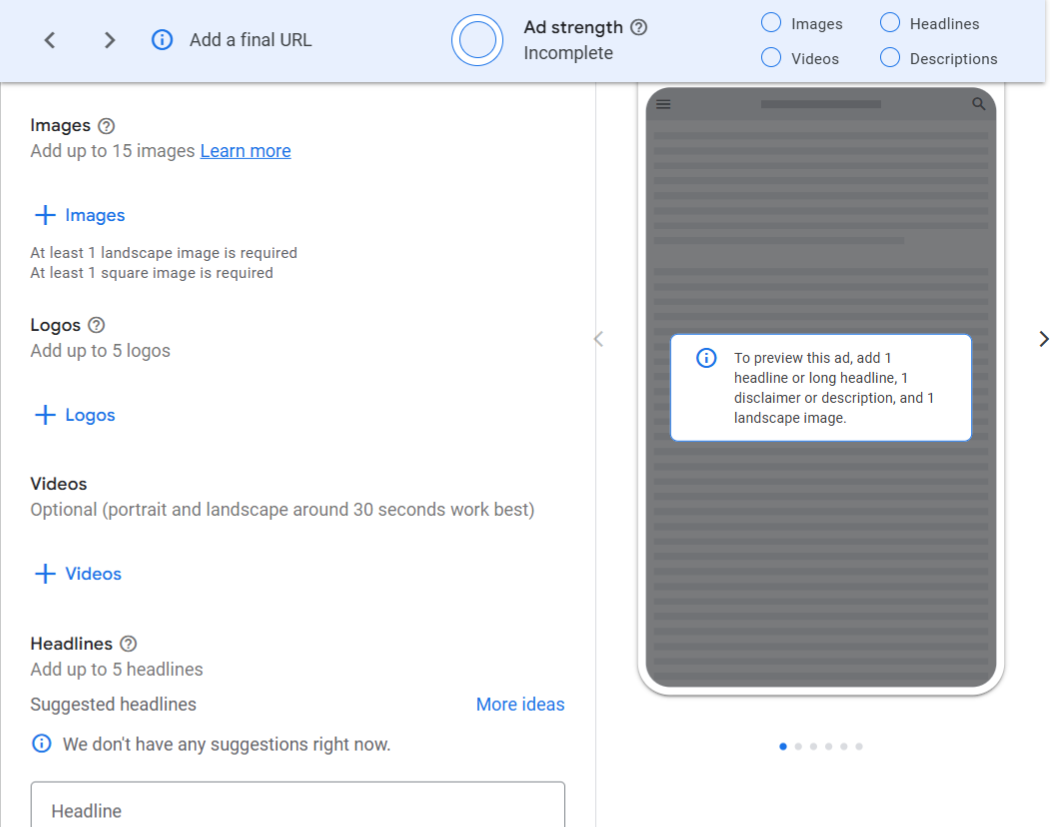
Step 7: Add Extensions (Optional but Recommended)
Use site link extensions, call extensions, and structured snippets to provide extra information and increase click-through rates.
Step 8: Launch and Monitor Your Campaign
- Review your settings and click “Publish.”
- Monitor performance using Google Ads analytics, adjusting bids and targeting as needed.
Step 9: Optimize for Better Performance
- Analyze which keywords and ads are performing best.
- Adjust bids, pause underperforming ads, and A/B test different versions.
- Use remarketing to target visitors who interacted with your ads but didn’t convert.
Learn more about how Google’s new definition of Top Ads impacts your paid campaigns.
2. Microsoft Ads
Microsoft Ads (formerly Bing Ads) is the second-largest search advertising platform, displaying ads on Bing, Yahoo, and AOL search networks.
While it has a smaller reach than Google, it often has lower competition and cost-per-click.
Placements: Bing Search, Yahoo Search, AOL, DuckDuckGo, Microsoft Audience Network
Formats: Search ads, shopping ads, display ads, audience ads
Pricing: On average, Bing Ads cost $1.54 per click across various industries. However, certain sectors tend to be more budget-friendly, such as job-related and apparel-focused ads. In contrast, industries like education, real estate, and home renovation tend to have higher costs, driving up the average CPC.
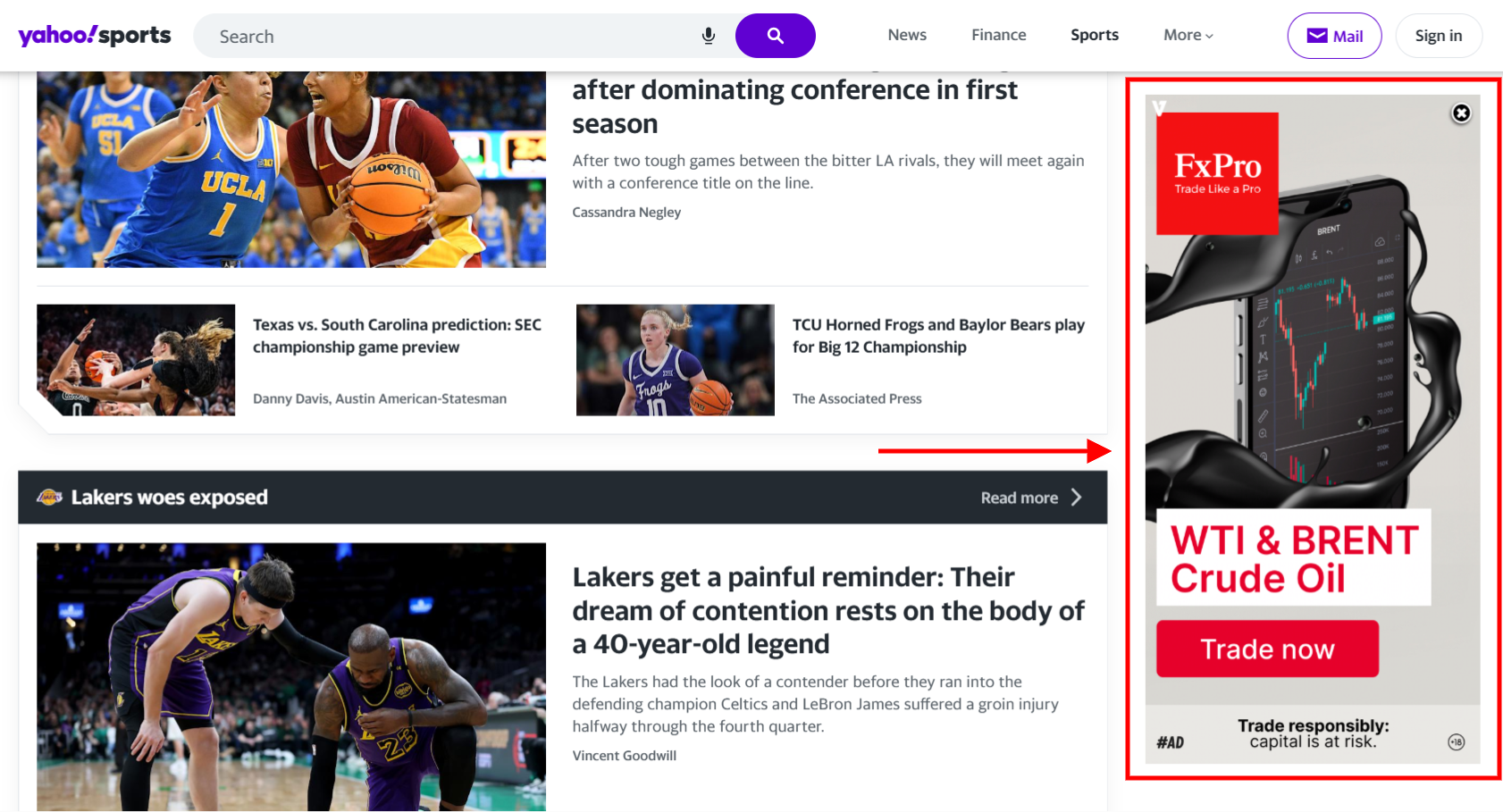
Why Should You Advertise on Microsoft?
- Less competition: Fewer advertisers mean lower CPCs compared to Google.
- High-value audience: Bing users tend to be older and more affluent.
- Cross-device targeting: Ads can appear across Microsoft’s ecosystem, including Windows, Outlook, CoPilot, and Edge.
How to Set Up a Microsoft Ads Campaign
- Create a Microsoft Ads account at Microsoft Ads.
- Choose your campaign goal (Sales, Leads, Website Traffic, etc.).
- Select your ad type (Search, Display, Shopping, Audience Ads).
- Set your targeting and budget.
- Create your ad copy and assets.
- Launch and monitor performance.
3. Facebook Ads
Facebook Ads is one of the most powerful social media advertising platforms, offering highly targeted ad placements across Facebook, Instagram, Messenger, and the Audience Network.
With 3.07 billion monthly active users, Facebook provides an opportunity to reach a massive audience.
Placements: Facebook News Feed, Stories, Messenger
Formats: Image ads, video ads, carousel ads, slideshow ads, collection ads
Pricing: Facebook Ads offer a relatively affordable option, with an average cost per click of $0.94. Compared to other popular social media platforms like LinkedIn, Instagram, and YouTube, Facebook offers a cost-effective way to reach your target audience. CPC may be lower than Google at times because it varies depending upon factors like target audience age group and geographical area.
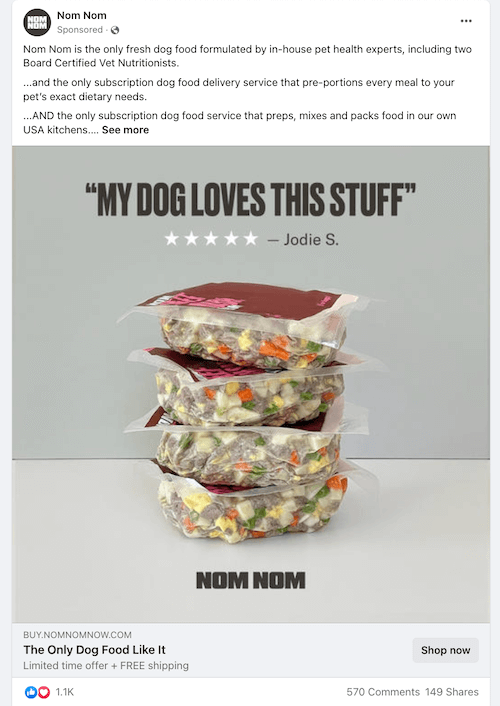
Why Should You Advertise on Facebook?
- Advanced targeting: Use detailed demographics, interests, behaviors, and custom audiences.
- Diverse ad formats: Engage users with images, videos, carousels, and interactive ads.
- Huge audience: Reach over 3 billion active monthly users.
- Budget flexibility: Suitable for small businesses and large enterprises alike.
- Retargeting capabilities: Show ads to users who’ve interacted with your brand before.
How to Set Up a Campaign on Facebook Ads
Step 1: Create a Facebook Business Manager Account
- Go to Facebook Business Manager and sign up.
- Link your Facebook page and set up payment details.
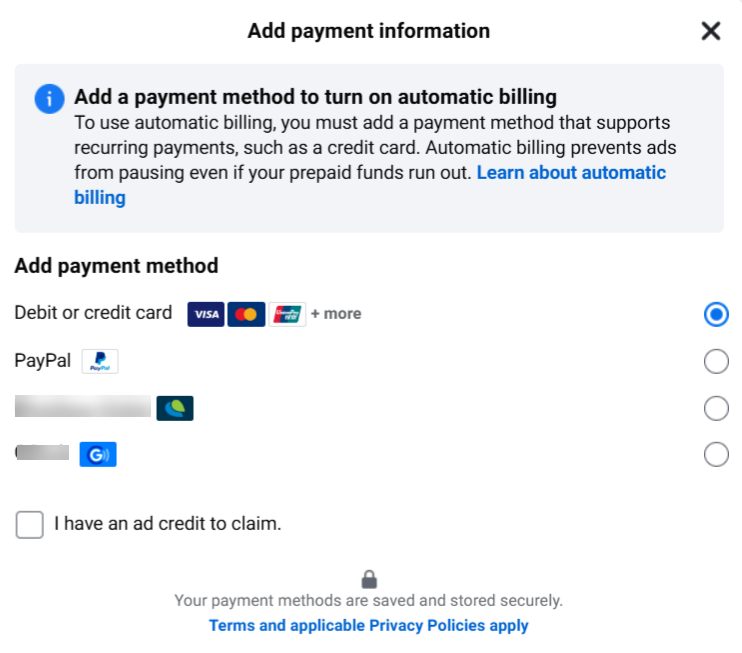
Step 2: Access Facebook Ads Manager
- Navigate to Facebook Ads Manager.
- Click “Create” to start a new campaign.

Step 3: Choose Your Campaign Objective
Options include Awareness, Traffic, Engagement, Lead Generation, App Promotion, and Sales.

Step 4: Define Your Audience Segments
Create custom or lookalike audiences for better targeting.

Step 5: Select Your Ad Placements
Choose automatic placements or manually select where ads will appear (Facebook Feed, Instagram Stories, Messenger, etc.).

Step 6: Set Your Budget and Schedule
- Choose a daily or lifetime budget.
- Choose cost-per-click or cost-per-impression.
- Set a start date and end date.

Step 7: Create Your Ads
- Choose an ad format.
- Upload images, videos, or carousels.
- Write compelling headlines and ad copy with a strong call to action.

Step 8: Launch and Monitor Your Campaign
- Review your ad settings and publish your campaign.
- Use Facebook Ads Manager to track performance, tweak targeting, and optimize your budget.
Step 9: Optimize for Better Results
- Split-test different ad creatives and audiences.
- Refine audience targeting criteria.
- Adjust budgets and bids based on performance.
- Use retargeting strategies to convert past visitors.

Screenshot from Fit Small Business
4. Instagram Ads
If your brand thrives on visuals, then Instagram is a great place to advertise.
Instagram Ads is a visual-first advertising platform integrated with Facebook Ads Manager. It allows businesses to showcase their products and services through high-quality images, videos, and interactive ad formats on Instagram’s feed, Stories, Reels, and Explore page.
Placements: Instagram Feed, Stories, Reels, Explore, Shopping
Formats: Image ads, video ads, carousel ads, story ads, collection ads, reel ads
Pricing: Recent numbers show that Instagram ads yield clicks, comments, and likes at an average cost of $0.40 to $0.90. The platform’s average cost-per-click ranges from $0.50 to $0.95, making it a competitive option for advertisers.

Screenshot from AdEspresso
Why Should You Advertise on Instagram?
- Highly visual platform: Perfect for brands that rely on aesthetics, such as fashion, beauty, food, and travel.
- Engaged user base: Instagram has over 2 billion monthly active users, with high engagement rates.
- Seamless Facebook integration: Advertisers can use Facebook Ads Manager for advanced targeting and analytics.
- Influencer-friendly: Ideal for businesses leveraging influencer partnerships and user-generated content.
- Shoppable features: Instagram Shopping allows users to purchase directly from ads.
How to Set Up an Instagram Ads Campaign
Step 1: Create a Facebook Business Manager Account
- Make sure that you have a Facebook business page and an Instagram professional account (Creator or Business).
- Since Meta owns both Facebook and Instagram, you’ll manage all your Instagram ads through the Facebook Ads Manager.
- Follow the steps in the previous section to create a Facebook Business Manager account.
Step 2: Access Facebook Ads Manager
- Navigate to Facebook Ads Manager.
- Click on “Create” to start a new campaign.
Step 3: Choose Your Campaign Objective
- Select a buying type (Auction or Reservation).
- Choose a campaign objective.

Step 4: Set a Budget and Schedule
- Choose between a daily or lifetime budget.
- Set a start and end date.

Step 5: Define Your Audience
Meta can do this for you or you can manually create a custom audience.

Step 6: Choose Your Ad Placements
Again, Meta can choose the optimal places to show your ads but you also have the option to select your ad placements (you can opt to run ads only on Instagram and not on Facebook).
Step 7: Create Your Ads
- Upload high-quality images or videos.
- Craft engaging captions and strong calls to action.
- Utilize Instagram-specific formats like Reels and Stories for maximum engagement.
Step 8: Launch and Monitor Your Campaign
- Review your settings and publish your campaign.
- Use Facebook Ads Manager to track key metrics and optimize performance.
5. LinkedIn Ads
LinkedIn Ads is a premium advertising platform designed specifically for B2B marketers, allowing businesses to target professionals based on job titles, industries, company size, and more. It’s an excellent choice for businesses looking to generate leads, promote webinars, or recruit top talent.
Placements: LinkedIn Feed, LinkedIn Stories, InMail, Right Column Ads
Formats: Sponsored Content, Message Ads (InMail), Dynamic Ads, Text Ads, Video Ads
Pricing: Advertising on LinkedIn doesn’t come cheap — with an average cost-per-click of $5 to $6, it’s definitely an investment. But if you’re looking to connect with the big shots — think CEOs, decision-makers, and other high-level pros — it’s worth the splurge.

Screenshot from Sprout Social
Why Should You Advertise on LinkedIn?
- B2B targeting: No other platform provides better access to professionals, decision-makers, and business influencers.
- High-quality leads: LinkedIn Ads often deliver higher-quality leads compared to other social media platforms.
- Industry-specific targeting: Ads can be shown to users based on their job role, industry, company size, and more.
- Thought leadership: LinkedIn Ads help businesses establish credibility by promoting insightful content to a professional audience.
- Powerful retargeting: Use Matched Audiences to retarget website visitors, email contacts, or people who have engaged with your LinkedIn content.
How to Set Up a LinkedIn Ads Campaign
Step 1: Create a LinkedIn Campaign Manager Account
- Go to LinkedIn Campaign Manager and sign up.
- Choose your LinkedIn business page for your campaign.
Step 2: Choose Your Campaign Objective
Options include Website Visits, Engagement, Video Views, Lead Generation, Website Conversions, Job Applicants, and Talent Leads.

Step 3: Select Your Target Audience
Use LinkedIn’s powerful audience filters to select demographics, job titles, industries, company sizes, and more.

Step 4: Select Your Ad Format
- Sponsored Content: Native ads in the LinkedIn Feed.
- Sponsored Messages: Personalized messages sent directly to users’ LinkedIn inboxes.
- Dynamic Ads: Personalized ads based on user profiles.
- Text Ads: Simple, text-based ads in the right column.

Step 5: Set Your Budget and Schedule
- Choose a daily budget and total budget.
- Select a bidding option: CPC (pay-per-click), CPM (pay-per-thousand impressions), or CPS (pay-per-message-send for InMail ads).
Step 6: Create Your Ad Content
- Write compelling ad copy tailored to professionals.
- Use high-quality visuals or videos to increase engagement.
- Include a strong call to action (e.g., “Download Now,” “Get a Free Demo,” “Register Today”).
Step 7: Launch and Monitor Your Campaign
- Review ad settings and launch your campaign.
- Use LinkedIn Campaign Manager analytics to track performance and make data-driven optimizations.
- Use LinkedIn Insight Tag to track conversions and retarget website visitors.
6. Twitter Ads
Twitter Ads allows you to reach targeted audiences based on interests, keywords, and engagement. Twitter’s real-time nature makes it a great place for businesses looking to spark conversations, engage audiences, and capitalize on trending topics.
Placements: Twitter timeline, trending topics, search results, Twitter Audience Platform
Formats: Promoted tweets, promoted accounts, promoted trends, video ads, carousel ads
Pricing: The average cost per click on Twitter Ads is around $0.33, but that number can fluctuate depending on your industry, ad type, and who you’re trying to reach.

Image source: Search Engine Land
Why Should You Advertise on Twitter/X?
- Real-time engagement: Twitter is one of the best platforms for live updates and trending conversations.
- Targeted advertising: Use keywords, hashtags, and audience behaviors to refine your ad reach.
- Engaged audience: Twitter users are often vocal and interact with brands, making it an excellent platform for engagement.
- Flexible budget options: Advertisers can set daily or total campaign budgets without mandatory minimum spending.
- Amplify organic content: Promoted tweets and trends can give an extra boost to successful organic posts.
How to Set Up a Twitter Ads Campaign
Step 1: Create a Twitter Ads Account
- Go to Twitter Ads and sign in with your Twitter account.
- Click “Create Campaign” to get started.
Step 2: Choose Your Campaign Objective
Options include Reach, Website Traffic, Engagements, Video Views, Sales, and App Installs.

Step 3: Select Your Budget
- Select a bidding option: Automatic, Maximum Bid, Target Bid
- Set your daily and total budget.

Step 4: Define Your Audience
- Select targeting criteria like age, gender, location, language, and device type.
- Narrow down your audience choice to interests, keywords, and conversation topics.
- You also have the option to create follower lookalikes.

Step 5: Create Your Ad
- Write an engaging tweet with a strong call to action.
- Add images, GIFs, or videos to increase engagement.

Step 6: Review and Launch
- Review your ad details and click “Launch Campaign.”
- Use Twitter Analytics to track engagement, conversions, and audience interactions.
7. Pinterest Ads
Pinterest has 522 million monthly active users, making it an excellent platform if shopping and product discovery align well with your marketing goals.
Pinterest Ads allow brands to promote their products through visually engaging pins that appear in users’ feeds, search results, and category pages. With a highly engaged audience looking for inspiration, Pinterest is a goldmine for brands in fashion, home decor, food, and DIY niches.
Placements: Home feed, search results, related pins, shopping tabs
Formats: Promoted Pins, Video Pins, Carousel Ads, Shopping Ads, Collection Ads
Pricing: Ad spending for Pinterest depends on what you’re trying to achieve. Want to get people engaging with your content? You’re looking at $0.10 to $1.50 per click. Need to get your brand out there? Expect to pay $2 to $5 per thousand impressions. And if you’re looking for quality traffic to your website, you’ll likely pay $0.10 to $1.50 per click.

Screenshot from Hootsuite
Why Should You Advertise on Pinterest?
- High purchase intent: Pinterest users often browse with the intent to buy, making it an excellent platform for e-commerce brands.
- Longer ad lifespan: Unlike other platforms where ads disappear quickly, Pinterest ads continue to gain traction over time as users save and share pins.
- Visual discovery platform: Great for brands with visually appealing products looking to reach an audience searching for inspiration.
- Shopping integration: Seamlessly integrate with Shopify and other e-commerce platforms to promote products.
- Lower competition: Compared to Facebook and Instagram, Pinterest has fewer advertisers, which often means lower CPCs.
How to Set Up a Pinterest Ads Campaign
Step 1: Create a Pinterest Business Account
- Go to Pinterest Business and sign up.
- Set up your profile, including your business name and website.
Step 2: Access Pinterest Ads Manager
- Sign up for Pinterest Ads.
- Navigate to the Pinterest Ads Manager and click “Create Ad.”

Step 3: Choose Your Campaign Objective
Options include Brand Awareness, Consideration, and Conversions.

Step 4: Set Your Budget and Schedule
- Choose a daily or lifetime budget.
- Select your bid type (CPC, CPM, or CPV).
- Set a start and end date.

Step 5: Choose a Targeting Strategy
- Choose a targeting strategy: reconnect with users or find new customers
- Create audience lists based on demographics (age, gender, location, language, device type), interests, and keywords

Step 6: Create Your Pin to Promote
- Upload high-quality images or videos.
- Write engaging titles and descriptions with relevant keywords.
- Add a destination link to direct users to your website.

Step 7: Select Your Ad Placement and Format
- Choose where your ads will appear (home feed, search results, related pins).
- Select your preferred ad format: Carousel, Collections, Idea, Image, Premiere Spotlight, Quiz, Showcase, or Video.

Step 8: Launch and Monitor Your Campaign
- Review settings and click “Publish” to launch your ad campaign.
- Use Pinterest Analytics to track performance and optimize as needed.
8. YouTube Ads
YouTube Ads is Google’s video advertising platform, allowing businesses to display ads on YouTube videos, YouTube search results, and the Google Display Network. With billions of active users consuming video content daily, YouTube is a prime platform for reaching engaged audiences.
Placements: YouTube videos (before, during, or after), YouTube search results, homepage, Google Display Network
Formats: Skippable in-stream ads, non-skippable in-stream ads, bumper ads, overlay ads, discovery ads, masthead ads
Pricing: So how much does it cost to get your ad seen on YouTube? On average, you’re looking at $0.010 to $0.030 per view. To give you a better idea, it usually takes around $2,000 to reach 100,000 viewers.

Why Should You Advertise on YouTube?
- Massive reach: YouTube has over 2.5 billion monthly active users, making it the second-largest search engine after Google.
- Highly engaging format: 72% percent of consumers prefer watching videos over reading a manual to learn about a product.
- Advanced targeting: Reach users based on demographics, interests, search behavior, and video engagement.
- Diverse ad options: Choose from skippable or non-skippable ads, short bumper ads, and display overlays to fit your campaign objectives.
- Retargeting potential: Show ads to people who have previously interacted with your website or YouTube channel.
How to Set Up a YouTube Ads Campaign
Step 1: Create a Google Ads Account
- Because Google owns YouTube, we’ll follow the same steps for creating a Google Ads campaign.
- If you don’t have one, create a Google Ads account and sign in to start a new YouTube campaign.
- Link your YouTube channel to your Google Ads account for seamless ad management.
Step 2: Choose a Campaign Goal
Clearly outline your campaign objectives, whether it’s Brand Awareness, Website Traffic, Leads, or Sales.

Step 3: Select Campaign Type
Choose the “Video” campaign type to run ads on YouTube.

Select an ad format that aligns with your goals – options include TrueView, Bumper Ads, Shorts, and In-Stream Ads.

Step 4: Set Your Budget and Bidding Strategy
- Set a daily or total budget
- Choose a bidding strategy and set a start and end date.

Step 5: Create an Audience Segment
Narrow your audience based on location, age, interests, and browsing behavior to reach the right viewers.

Step 6: Choose Your Ad Placements
Select YouTube search results, YouTube videos, or Google Display Network.

Step 7: Create Your Video Ad
Upload your video to YouTube, then write a compelling title, description, and call to action.

Step 8: Launch and Monitor Performance
- Click “Create campaign” to launch your ad.
- Review metrics like view rate, watch time, and conversion tracking to optimize your campaign.
Step 9: Optimize for Better Results
- Experiment with different ad formats, headlines, and calls to action to identify what resonates best with your audience.
- Given the rise in mobile ads, ensure your ads are optimized for a seamless viewing experience on various devices.
- Utilize remarketing to re-engage users who have interacted with your brand but haven’t converted.
- Evaluate the effectiveness of your targeting parameters and make adjustments to reach a more relevant audience.
9. TikTok Ads
Known primarily for its short video format which captivates younger audience segments, TikTok’s advertising strategy revolves around creativity and authenticity.
If your target market includes Gen Zs or millennials, then exploring the world of TikTok might be worthwhile. With each unique ad type providing different ways to engage users, it could potentially yield high engagement rates that make your investment worth every penny.
Placements: TikTok For You Page, In-Feed Ads, Branded Hashtag Challenges, Branded Effects
Formats: In-Feed Video Ads, TopView Ads, Branded Hashtag Challenges, Branded Effects, Spark Ads
Pricing: TikTok is still pretty new to the ad game, but from what we can gather, the average cost per click on TikTok is around $0.10 to $1, depending on industry and target audience.

Screenshot from HubSpot
Why Should You Advertise on TikTok Ads?
- Massive reach: TikTok has 1.69 billion monthly active users, making it a great place to go viral.
- Highly engaged audience: Users spend an average of 95 minutes per day on TikTok, more than any other social network.
- Creative ad formats: Interactive ad types like Branded Effects and Hashtag Challenges drive engagement.
- Strong ROI: Brands that create engaging content see higher conversion rates.
- Affordable options: Small businesses can start with a relatively low budget.
How to Set Up a TikTok Ads Campaign
Step 1: Create a TikTok Ads Manager Account
- To advertise on TikTok, you need to have a TikTok Business account.
- Go to TikTok Ads and sign up.
- Set up billing information and connect your business account.
Step 2: Choose Your Campaign Objective
Options include Reach, Traffic, Conversions, App Promotion, Video Views, and Lead Generation.

Step 3: Select Your Ad Placement
Choose between automatic placements or manually selecting TikTok, Pangle, or other partner apps.

Step 4: Set Up Targeting
You can select Broad Targeting and let TikTok optimize delivery to the best audience, or manually select audience filters including age, gender, location, language, household income, spending power, interests, behaviors, and device type.
Step 5: Set Your Budget and Schedule
- Select a daily or lifetime budget.
- Choose bidding strategies like Cost Per Click (CPC), Cost Per Mille (CPM), Cost Per View (CPV), and App Event Optimization (AEO).
Step 6: Create Your TikTok Video Ad
- Use TikTok’s Video Creation Kit or upload your own video content.
- Include music, captions, and call-to-action buttons.
- You can promote a single video or carousel images.
- Add a destination link to direct users to your website.

Step 7: Publish and Monitor Your Campaign
- Review settings and click “Publish All” when you’re ready to post your ad.
- Track performance in TikTok Ads Manager.
- Optimize based on engagement, click-through rates, and conversions.
10. Amazon Ads
Amazon Ads is a powerful PPC platform designed specifically for e-commerce brands and sellers looking to reach shoppers on Amazon’s marketplace. With millions of daily transactions, advertising on Amazon helps businesses increase visibility and drive sales directly on the platform.
Placements: Amazon search results, product pages, third-party websites (via Amazon DSP)
Formats: Sponsored Products, Sponsored Brands, Sponsored Display, Amazon DSP
Pricing: According to recent data, the average cost per click on Amazon is around $0.91 in the United States.

Why Should You Advertise on Amazon Ads?
- High purchase intent: Amazon users are actively searching for products, making them more likely to convert.
- Diverse ad formats: Promote individual products, build brand awareness, or retarget potential customers.
- Amazon’s vast audience: Millions of daily shoppers offer a huge potential customer base.
- Advanced targeting: Target users based on keywords, shopping behavior, demographics, and interests.
How to Set Up an Amazon Ads Campaign
Step 1: Create an Amazon Seller or Vendor Account
- Go to Amazon Advertising and sign in.
- Ensure you have an active Amazon Seller or Vendor account.
Step 2: Choose Your Ad Type
- Sponsored Products: Ads for individual product listings.
- Sponsored Brands: Showcase multiple products with your brand logo.
- Sponsored Display: Display ads on and off Amazon.
- Amazon DSP: Programmatic display and video ads across the web.

Step 3: Set Your Targeting Strategy
- Keyword Targeting: Choose relevant keywords to trigger ads in search results.
- Product Targeting: Show ads on competing product pages.

Step 4: Set Your Budget and Bidding Strategy
Set a daily budget (minimum of $1), duration, and bidding strategy.

Step 5: Create Your Ads
- For Sponsored Products, select the product you want to promote.
- For Sponsored Brands, design a compelling brand banner with multiple products.
- Add engaging ad copy and high-quality visuals.

Step 6: Launch and Monitor Your Campaign
- Review your ad settings and click “Launch campaign” to publish your ad.
- Use Amazon Ads analytics to track performance and adjust bids as needed.
11. Spotify Ads
Spotify Ads allows businesses to reach listeners through audio, video, and display ads on the Spotify platform. With a growing audience of both free and premium users, Spotify provides an opportunity to target users based on their music preferences, listening habits, and demographics.
Placements: Spotify Free tier, podcasts, playlists, in-app banners
Formats: Audio ads, video ads, display ads, podcast sponsorships
Pricing: The cost of advertising on Spotify depends on the campaign and targeting options. The average cost per thousand impressions ranges between $15 and $25, meaning that with a $250 campaign budget, you’d be expected to receive between 10,000 and 16,667 impressions.

Screenshot from Spotify
Why Should You Advertise on Spotify Ads?
- Engaged audience: Users spend hours listening to music on Spotify, making them receptive to ads.
- Unique targeting: Target based on music taste, mood, and real-time context.
- Non-skippable audio ads: Capture attention with unskippable messages.
- Growing podcast network: Advertise through podcast sponsorships to reach niche audiences.
- Flexible budget: Self-serve options allow businesses of all sizes to participate.
How to Set Up a Spotify Ads Campaign
Step 1: Sign up for Spotify Ads Manager
- Go to Spotify Ads Manager and create an account.
- Set up your business profile and payment details.

Step 2: Choose Your Ad Placement and Format
You can run ads on Spotify during music playback or within podcasts.

Format options include:
- Audio ads: Play between songs with a clickable companion image.
- Video ads: Appear when users engage with the Spotify app.
- Display ads: Banners and overlays within the app.
- Podcast sponsorships: Partner with creators to promote your brand.
Other ad formats are Sponsored Sessions, Leaderboard, Video Takeover, Branded Playlist, and Advertiser Page.
Step 3: Set Your Target Audience
- Set audience filters like location, language, age, gender, interest, and behavior.
- Use Spotify’s unique targeting options like music genres, moods, playlists, recent podcasts, and streaming platforms.

Step 4: Set Your Budget, Schedule, and Bidding Strategy
The minimum budget is $250 for Spotify music ads.

Step 5: Create Your Ad
- For audio ads: upload a script, pick background music, choose a voice actor profile, and let Spotify generate a professional voiceover. You can also upload your own recording.
- For video and display ads: use high-quality visuals that grab attention.

Step 6: Publish Your Ad and Monitor Performance
- Review your settings and click “Publish” to submit your ad for approval.
- Track performance metrics in Spotify Ad Studio and optimize for better engagement.
12. Reddit Ads
Reddit Ads is the advertising platform for Reddit, one of the largest online communities with millions of active users engaging in niche discussions.
Unlike traditional social media, Reddit is structured around topic-based forums (subreddits), making it an excellent platform for reaching highly engaged and specific audiences.
Placements: Reddit feed, subreddit pages, conversations, and right-hand sidebar.
Formats: Promoted posts (text, image, or video), display ads, and carousel ads.
Pricing: According to available information, the average cost per click of Reddit ads usually falls between $0.50 and $2.
![r/RedditforBusiness - [Product update] Introducing free-form ads, our latest unique-to-Reddit ad format](https://preview.redd.it/product-update-introducing-free-form-ads-our-latest-unique-v0-rxzu27a3kboc1.png?width=2160&format=png&auto=webp&s=afe66766339667f439f4aba59801ec90bbc5c2e9)
Screenshot from Reddit for Business
Why Should You Advertise on Reddit?
- Highly targeted audiences: With thousands of subreddits covering every imaginable topic, you can reach niche communities with strong interests in your industry.
- Engaged users: Reddit users are known for their deep engagement with content, leading to meaningful discussions and interactions with ads.
- Cost-effective advertising: Compared to other social media platforms, Reddit often has lower competition and ad costs.
- Diverse ad formats: From native promoted posts to visually engaging display ads, Reddit provides various ways to capture attention.
How to Set Up a Reddit Ads Campaign
Step 1: Create a Reddit Ads Account
- Visit Reddit Ads and sign up.
- Click “Create Campaign” on the Ads Manager.
Step 2: Select a Campaign Objective
Similar to other ad platforms, your options here are Brand Awareness, Traffic, Conversions, Video Views, and App Installs.

Step 3: Define Your Audience
- Use Reddit’s interest-based targeting or select specific subreddits to reach the right community.
- Filter users based on location, gender, and device type.

Step 4: Select Your Ad Format
- Promoted Posts: Appear like regular Reddit posts but labeled as “Promoted.”
- Carousel Ads: Allow multiple images or videos in a swipeable format.
- Display Ads: More traditional banner-style ads (available for larger advertisers).
For placement, you can choose to display your ad on the Reddit feed or specific conversations.
Step 4: Set Your Budget and Bidding Strategy
- Choose between cost-per-click (CPC) or cost-per-thousand-impressions (CPM).
- Set daily or lifetime budgets based on campaign goals.

Step 5: Create Your Ad Copy and Design
- Write engaging and authentic headlines to match Reddit’s conversational style.
- Use relevant images or videos that fit naturally within the Reddit community.
- Don’t forget to write a call-to-action and set a destination URL.

Step 6: Publish and Monitor Your Campaign
- Review your ad settings and hit “Publish” to go live.
- Use Reddit’s analytics dashboard to track performance and engagement metrics.
13. Taboola
Taboola is a native advertising platform that helps brands distribute their content across high-traffic publisher websites. It operates as a content discovery network, displaying recommended articles, videos, and sponsored content within editorial feeds on popular news sites.
Placements: News websites, blogs, content-heavy platforms (e.g., CNN, BBC, The Huffington Post)
Formats: Native ads, sponsored content, video ads, carousel ads
Pricing: The average cost per click on Taboola can vary depending on your campaign and niche, but generally falls within a range of $0.20 to $0.70 per click; with the minimum allowed CPC being $0.01. Most experts recommend starting with a higher bid to gain better visibility in the network.
Image source: Investopedia
Why Should You Advertise on Taboola?
- Massive reach: Taboola partners with thousands of top-tier publishers, exposing your content to millions of readers.
- Non-disruptive advertising: Native ads blend seamlessly into the editorial content, leading to higher engagement rates.
- Content amplification: Ideal for businesses looking to drive traffic to blogs, product pages, or lead generation content.
- AI-powered targeting: Uses machine learning to recommend content to the right audience based on their behavior and interests.
- Budget flexibility: Advertisers can start with small budgets and scale up as they see results.
How to Set Up a Taboola Ads Campaign
Step 1: Create a Realize Account
- Visit Taboola and create a Realize account.
- Fill in business details and link your website or landing page.

Step 2: Choose a Campaign Objective
- Open your Realize dashboard and create a new campaign.
- Select a primary goal for your ads.
Step 3: Choose a Target Audience and Budget
Follow the prompts to set audience targeting, bid strategy, budget settings, and scheduling.

Step 4: Upload Your Ad Creatives
Provide headlines, images, and descriptions that match Taboola’s native format.
Step 5: Review and Publish
Navigate to the Taboola Ads dashboard to view all your ads.
Here you can review your settings and edit each ad before publishing them.
14. Outbrain
Outbrain is another native advertising platform that places sponsored content and advertisements within articles on major media sites. It helps businesses drive traffic to their websites by promoting engaging content to relevant audiences.
Placements: Leading news websites, blogs, and media platforms
Formats: Sponsored content, native ads, carousel ads, video ads
Pricing: The cost per click for Outbrain ads can range from $0.03 to $1.50, depending on audience size, targeting, demand, industry, and ad placement.

Screenshot from Outbrain
Why Should You Advertise on Outbrain?
- Seamless integration: Outbrain’s ads appear naturally within content, making them less intrusive and improving engagement rates.
- Premium publisher network: Ads appear on reputable news sites like CNN, The Guardian, and The Washington Post.
- Content-driven marketing: Ideal for brands using storytelling, blogs, or thought leadership to engage audiences.
- AI-powered targeting: Uses AI to analyze user behavior and show ads to the most relevant audiences.
How to Set Up an Outbrain Ads Campaign
Step 1: Create an Outbrain Account
- Visit Outbrain and sign up.
- Set up your advertiser profile and input business details.
Step 2: Install Outbrain
Install the Outrain tracking pixel to track conversions and create custom audiences.
Step 3: Choose Your Advertising Goal
Select whether you want to drive website traffic, increase brand awareness, or generate conversions.

Step 4: Choose Your Ad Format
- Standard: Showcase your message with simple, clean ads featuring images, copy, and optional CTAs to drive leads and sales.
- Carousel: Use up to 10 images to showcase products and brand stories with customized CTAs for maximum engagement.
- App Install: Target app installs with custom CTAs, logos, ratings, and image options to increase conversions from high-value users.
- Outstream Video: Native video format that plays only when in-view, ensuring non-disruptive ads and better user engagement.
- Clips: Animated GIF or MP4 ads designed for lower-funnel performance with a strong CTA to drive consumer action.
- Click-to-Watch Video: User-initiated video format ideal for longer videos, driving consideration and action without interruptions.

Your platform options include smartphone, tablet, and desktop.
Step 5: Set Your Budget and Bidding Strategy
- Choose a bidding strategy based on your campaign objective.
- Adjust CPC bids based on competition and desired reach.

Minimum budget is $20 per day.
Step 6: Define Your Target Audience
You can customize your campaign settings to further target your desired audience, but you can also let Outbrain do it for you.

Step 7: Submit Your Content
Create 3 headlines and several image variations per URL to allow the system to choose the top performer and drive attention to a specific page.

15. AdRoll
AdRoll is a retargeting and display advertising platform designed to help businesses bring back visitors who have previously interacted with their website. It specializes in retargeting ads across display networks, social media, and email marketing, making it a powerful tool for increasing conversions.
Placements: Websites in AdRoll’s partner network, Google Display Network, Facebook, Instagram, and email campaigns.
Formats: Display ads, social media ads, dynamic product ads, email ads.
Pricing: AdRoll charges on a pay-per-click basis, so the cost per click depends on how many people click on your ad.

Why Should You Advertise on AdRoll?
- Powerful retargeting capabilities: Re-engage visitors who left your website without converting.
- Omnichannel reach: Ads appear across websites, social platforms, and even in users’ email inboxes.
- AI-driven optimization: AdRoll’s machine learning helps improve campaign performance over time.
- Seamless integrations: Works with Shopify, WooCommerce, and other e-commerce platforms to streamline ad creation and targeting.
- Flexible budget options: Suitable for businesses of all sizes with customizable spending limits.
How to Set Up an AdRoll Campaign
Step 1: Create an AdRoll Account
- Sign up at AdRoll and connect your website.
- Install the AdRoll tracking pixel to start collecting visitor data.
Step 2: Choose Your Campaign Type
- Retargeting: Target users who have visited your site but didn’t convert.
- Brand Awareness: Reach new audiences through display and social media ads.
- Email Campaigns: Deliver personalized ads to your existing email subscribers.

Step 3: Set Audience Targeting and Create Campaign
- Identify your retargeting segments and important events (e.g., cart abandoners, past purchasers, frequent visitors).
- Customize wait times.
- Add important touchpoints into the sequence.
- Select channels and budget.

Step 4: Upload Your Ads
- Design engaging banners, videos, or carousel ads.
- Use dynamic product ads to show personalized recommendations to shoppers.
- Click “Launch” to submit your ads for review.

No matter your business goals, there’s a PPC network out there that fits your needs. Experiment, analyze, and optimize your campaigns to maximize your return on investment!
Finding Your Fit Among Niche Platforms
Not all PPC platforms are created equal. While Google, Facebook, and YouTube dominate the digital advertising space, smaller niche platforms offer unique advantages. Finding the right PPC network for your business depends on your industry, audience, and campaign goals.
A few things to consider when choosing a PPC platform:
- Audience demographics: Does the platform attract your target customers?
- Ad format suitability: Does the platform support the type of ad you want to run (search, display, video, etc.)?
- Budget flexibility: Some platforms require a higher minimum ad spend than others.
- Competition levels: Less saturated platforms may offer lower CPCs and better engagement.
- Conversion potential: Which platform aligns best with your business objectives (leads, sales, brand awareness, etc.)?
Here are the best niche PPC platforms for specific industries:
- Retail & E-commerce: Amazon Ads, Pinterest Ads, Instagram Ads
- B2B & Professional Services: LinkedIn Ads, Microsoft Ads
- Tech & Startups: Reddit Ads, Twitter Ads, YouTube Ads
- Entertainment & Lifestyle: TikTok Ads, Spotify Ads, Facebook Ads
- News & Content-Based Sites: Taboola, Outbrain, AdRoll
Targeting Options Across Platforms
One of the biggest perks of PPC advertising is that you can target audiences with laser precision.
But how do you actually reach the right audience?
Well, different platforms offer different ways to get your ads in front of the people most likely to be interested in what you’re selling. Let’s look at three major targeting strategies that advertisers rely on.
1. Keyword Contextual Targeting
Ever searched for something on Google and seen an ad pop up that perfectly matches what you were looking for? That’s keyword targeting in action.
PPC platforms like Google Ads and Microsoft Ads show your ads based on the exact words people type in their searches — or even the content they’re reading online.
Best for:
- Businesses that want to target people actively searching for their product or service.
- Brands looking to place ads on web pages that have relevant content.
Platforms that use it: Google Ads, Microsoft Ads, Taboola, Outbrain
2. Audience-Based Targeting
Instead of focusing on keywords, this method lets you target specific types of people based on their interests, behaviors, and demographics.
Ever notice how Facebook or Instagram ads seem to know exactly what you’ve been into lately? That’s audience-based targeting doing its job.
Best for:
- Brands running retargeting campaigns (like showing ads to people who visited their website but didn’t buy anything).
- Businesses that want to reach a specific group of people (e.g., new moms, business owners, fitness enthusiasts).
- Companies looking to build brand awareness among a broad but relevant audience.
Platforms that use it: Facebook Ads, Instagram Ads, LinkedIn Ads, Twitter Ads, Pinterest Ads, AdRoll
3. Mobile Ad Targeting
With more people glued to their phones than ever, mobile-specific targeting is a game-changer. This lets advertisers focus on mobile users, tailoring their ads based on things like device type, location, or even which apps people use.
Best for:
- Local businesses trying to attract foot traffic (e.g., a coffee shop targeting people nearby).
- Brands running in-app ad campaigns.
- Companies that know their audience primarily browses on mobile.
Platforms that use it: Google Ads (Mobile Search & Display), TikTok Ads, YouTube Ads, Spotify Ads
By choosing the right targeting strategy (or a mix of them), advertisers can make sure their PPC campaigns aren’t just reaching people — but reaching the right people.
How to Write a Great PPC Ad
Creating an effective PPC ad is more than just writing a few catchy words. It requires strategy, precision, and an understanding of what drives clicks and conversions.
To create a kickass ad that gets clicks:
1. First, Know Your Audience
Before you write a single word, research your target audience.
What are their pain points? What solutions are they looking for?
A well-crafted ad speaks directly to their needs and desires.
2. Write Catchy Headlines
Your headline is the first thing people see. Make it clear, engaging, and benefit-driven.
Instead of “Buy Our Product,” try something like “Save 50% on [Product] – Limited Time Offer!”
Check out these examples of click-worthy PPC ad headlines.
3. Highlight Unique Selling Points
What makes your offer special? Whether it’s free shipping, a money-back guarantee, or an exclusive feature, highlight it in your ad copy.
4. Include a Strong Call to Action
Tell users exactly what to do next. Examples include:
“Shop Now & Save $50”
“Get Your Free Trial”
“Sign Up in Seconds”
Check out this guide on how to write cool, warm, and hot CTAs for your PPC ads.
Ad Copy Made Easy
Writing great ad copy consistently can be a challenge, especially if you’re not a seasoned copywriter.
If you’re struggling to come up with unique ad copy that’s specifically written for the audience of your chosen PPC platform, let BrandWell help.
BrandWell’s short-form content writer, WriteWell, features a writing assistant called AIMEE, plus 30+ marketing-trained AI agents, designed to create PPC ad copies for different ad programs from a simple prompt.
Here’s an example:

Overcoming Challenges with Ad Blockers
Even the best-written PPC ads won’t deliver results if they never reach your audience. With the rise of ad blockers, many users are skipping right past digital ads — without even realizing they were there in the first place.
So, how can advertisers adapt and ensure their campaigns still make an impact? Let me share some secrets on how to bypass those ad blockers and reach your audience without disrupting their experience.
1. Try Native Advertising
Ad blockers primarily target traditional banner ads, but native ads blend seamlessly into website content, making them harder to detect.
Platforms like Taboola, Outbrain, and AdRoll specialize in native advertising.
2. Publish Acceptable Ads
Some ad blockers allow “acceptable ads” that meet specific criteria, such as non-intrusiveness and relevance. Ensure that your ads comply with these criteria to increase the chances of being displayed to users who have installed ad blockers.
Consider engaging with ad blocker companies and organizations to understand their criteria for acceptable ads and work towards finding common ground that benefits both advertisers and users.
3. Advertise on Social Media
Most social media platforms, such as Facebook, Instagram, LinkedIn, and TikTok, display ads directly within the user’s feed or stories, making them less likely to be blocked.
4. Run Video and Audio Ads
Ad blockers struggle to filter video ads on YouTube and TikTok or audio ads on Spotify and podcasts. These formats allow brands to engage audiences in ways that traditional display ads cannot.
5. Focus on Mobile In-App Advertising
Since many ad blockers target desktop browsers, mobile ads within apps (on TikTok, Instagram, and gaming apps) often remain unaffected. Leveraging in-app advertising can help maintain visibility.
6. Offer an Ad-Free Experience in Exchange for Data
Some websites and platforms allow users to disable ads in exchange for signing up for a newsletter or a premium subscription. This strategy works well for news sites, SaaS platforms, and online publications.
7. Promote Through an Influencer
Instead of relying solely on PPC ads, collaborate with influencers to promote your brand organically. Sponsored posts from influencers bypass ad blockers while maintaining credibility.
8. Optimize First-Party Data for Retargeting
Ad blockers limit third-party tracking, but retargeting campaigns using first-party data (e.g., website visitors, email subscribers) remain effective.
Platforms like Google Ads and Facebook Ads allow businesses to retarget known audiences.
9. Anti-Ad Blocker Scripts
There are tools and scripts available that can detect ad blockers and prompt users to disable them to access the content. However, be cautious as some users might find these messages intrusive or might choose to leave the site altogether.
10. Respect User Privacy
Avoid invasive tracking and data collection practices that may lead users to install ad blockers in the first place. Be transparent about your data usage and provide users with clear options to manage their preferences.
Remember that ad blocking is often driven by users’ desire for a better online experience and concerns about privacy and security. Balancing user preferences with effective advertising strategies is key to overcoming challenges with ad blockers while maintaining a positive relationship with your audience.
So yes – there is hope even amidst rising trends in the usage of ad blockers.
FAQs – Best PPC Platforms
What is the most used PPC platform?
Google Ads is the most widely used PPC platform, offering search ads, display ads, shopping ads, and video ads. It dominates the market due to its massive reach and advanced targeting options.
Which PPC is the best?
The best PPC platform depends on your goals:
- Google Ads – Best for search intent and high conversion rates
- Facebook Ads – Best for audience targeting and social engagement
- YouTube Ads – Best for video marketing and brand awareness
- LinkedIn Ads – Best for B2B advertising
- Amazon Ads – Best for e-commerce and product sales
What is the best platform for ads?
The best advertising platform depends on your business type:
- Google Ads – Ideal for businesses targeting search traffic
- Facebook & Instagram Ads – Best for brand building
- YouTube Ads – Perfect for marketing visual products
- LinkedIn Ads – Great for B2B and professional services
- Amazon Ads – Best for product-based businesses
What are PPC platforms?
PPC platforms are advertising networks where businesses pay per click or impression to display ads. Popular PPC platforms include Google Ads, Microsoft Ads, Facebook Ads, Instagram Ads, YouTube Ads, LinkedIn Ads, Amazon Ads, and TikTok Ads.
Conclusion
Looking for the best PPC platforms for your brand?
Consider the nature of your business, the preferences of your target audience, and the goals you aim to achieve when selecting online advertising options.
Whether you’re weaving a narrative through video ads, making a visual impact with display ads, or engaging with users on social media, the right platform amplifies your message and resonates with your audience.
Don’t be afraid to explore these various platforms when considering where to place your PPC ads. With careful research and planning, you can find a platform that meets your needs while providing excellent ROI potential.
👉 Need help with your ad copy? Break through writer’s block with the help of generative AI! BrandWell has over 30 AI agents that specialize in writing Facebook ads, Twitter ads, LinkedIn ads, YouTube ads, and other types of promotion. Try it today!

UNLOCK YOUR POTENTIAL
Long Headline that highlights Value Proposition of Lead Magnet
Grab a front row seat to our video masterclasses, interviews, case studies, tutorials, and guides.




